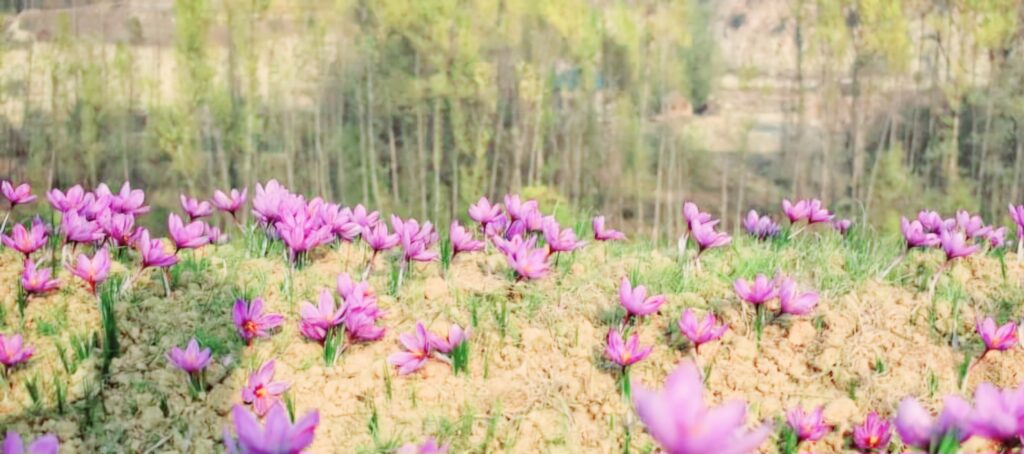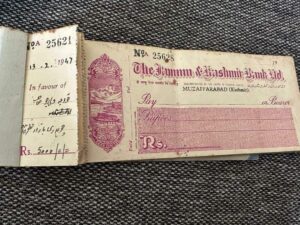The Purple Gold of Kashmir: Saffron Harvest in Pampore

By Meer Altaf
Nestled in the heart of Kashmir, Pampore is famous worldwide as the saffron capital of India. Known for its high-quality, aromatic saffron, this picturesque town transforms into a vibrant purple canvas each autumn as the saffron flowers bloom. The arrival of the saffron crocus not only signals the beginning of Kashmir’s winter but also sets the stage for a cherished, centuries-old tradition.
The Significance of Saffron in Kashmir
Kashmiri saffron, locally known as “Kong,” is among the most precious varieties in the world. Renowned for its deep color, potent aroma, and medicinal properties, Kashmiri saffron stands out due to its unique quality. It is richer in crocin, the compound responsible for its distinct color, and has a higher concentration of safranal, which gives saffron its intense fragrance. This “purple gold” is woven deeply into the cultural and economic fabric of Kashmir, supporting the livelihoods of many families in Pampore.
The Harvest Season: A Ritual of Love and Labor
The saffron harvest season in Pampore begins in late October and extends into November, coinciding with the onset of winter. The fields, often covered in misty mornings, are dotted with laborers, mostly women, carefully handpicking each delicate flower at dawn when the blossoms are fresh and fragile. The sight of fields turned into a sea of purple is a breathtaking spectacle that attracts visitors and photographers alike.
Each saffron flower yields only three tiny, crimson-red stigmas, which are carefully separated from the flower and dried to produce saffron threads. It is a labor-intensive process, requiring thousands of flowers to produce just a single kilogram of saffron. This painstakingly meticulous effort is what makes Kashmiri saffron so rare and expensive.
The Economic Impact and Challenges
Saffron farming is an essential economic activity for many families in Pampore. However, the farmers face numerous challenges, including unpredictable weather patterns, water scarcity, and competition from cheaper, lower-quality saffron in the global market. In recent years, the government has taken steps to support saffron farmers through initiatives like the National Saffron Mission, which focuses on improving irrigation, providing subsidies, and ensuring quality control to protect this heritage crop.
Saffron and Kashmiri Culture
Beyond its economic value, saffron holds a cherished place in Kashmiri culture. It is used in traditional dishes, such as the fragrant “Kahwa” tea and “Wazwan,” the celebrated multi-course feast. Additionally, saffron finds a place in Ayurvedic medicine and is considered auspicious in Kashmiri weddings and festivals. The vibrant spice, with its characteristic golden hue, symbolizes prosperity and purity in Kashmiri society.
A Symbol of Resilience and Hope
The saffron fields of Pampore are not just a source of livelihood; they are a symbol of resilience for the people of Kashmir. Despite the challenges, the farmers of Pampore continue to cultivate this delicate spice, carrying forward a legacy that has been passed down through generations. The sight of saffron fields blossoming each year is a reminder of nature’s beauty and the enduring spirit of Kashmir.
In a world where traditional practices are often overshadowed by modernity, Pampore’s saffron harvest stands as a testament to the enduring cultural heritage of Kashmir. The harvest season not only brings saffron but also a sense of pride and joy to the region, as people from all over come to witness the unique beauty of this “purple gold” and celebrate the rich tradition of Kashmiri saffron farming.








